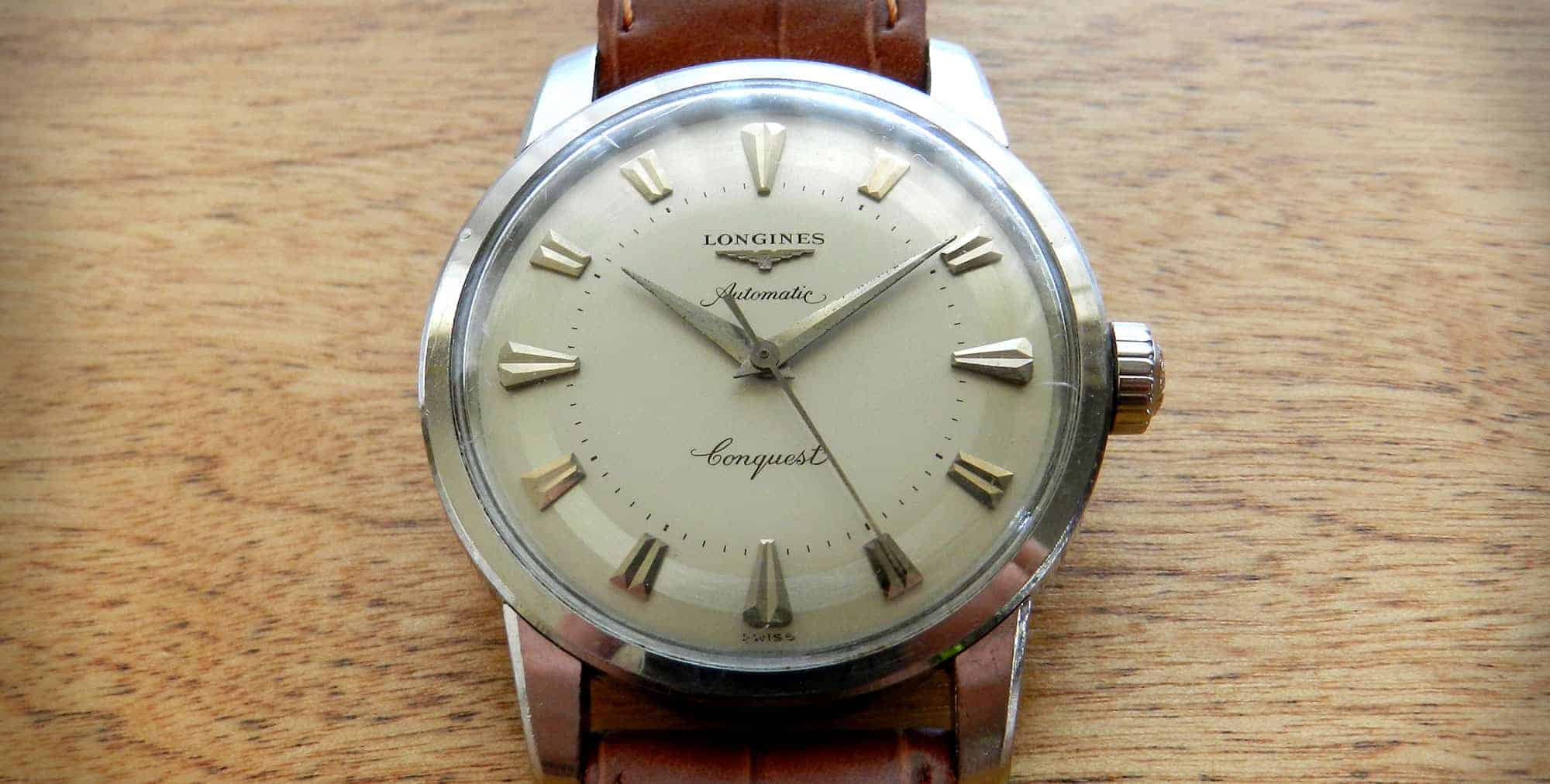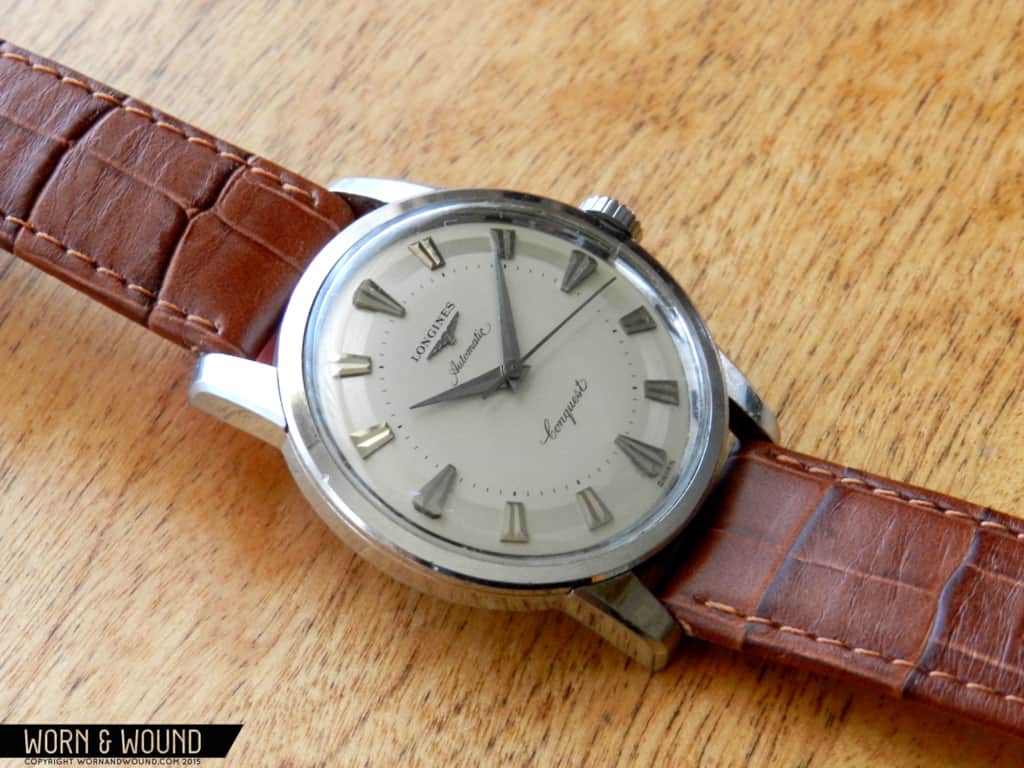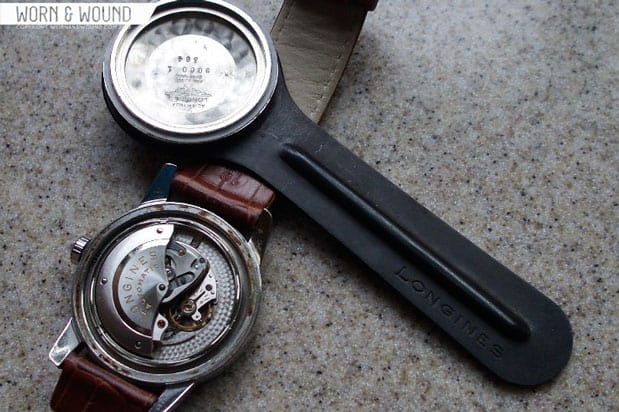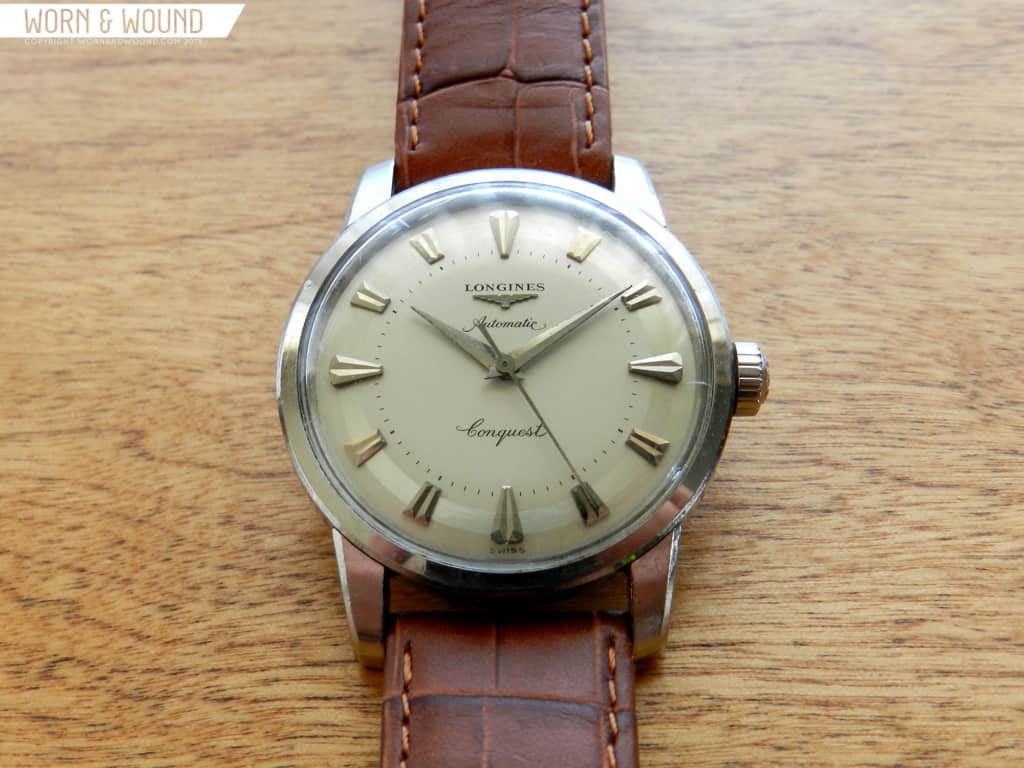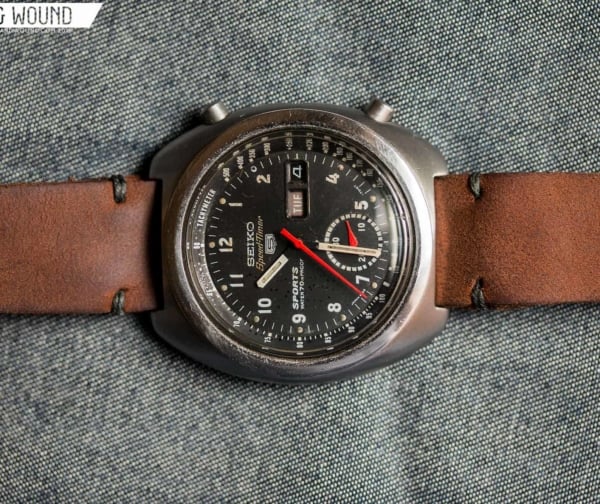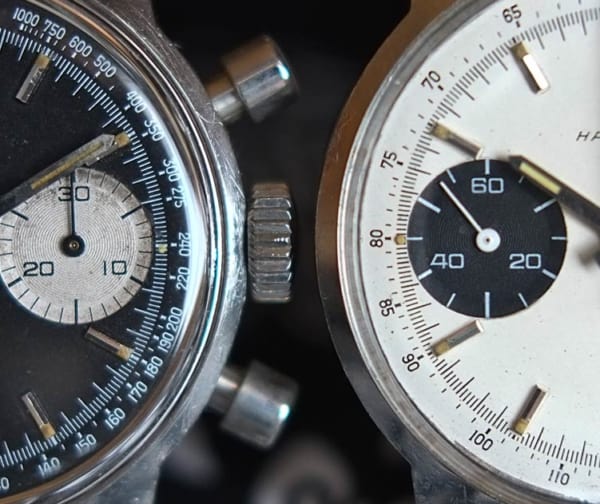In 1954 Longines launched the Conquest line, and with it a new era for the company. The Conquest was the first step in a new development and marketing strategy with a named line or family of watches. Many more were to follow, but the venerable Conquest (such a killer name too…) was the beginning. Having a named family of watches certainly wasn’t introduced by Longines, but they definitely utilized the strategy to its fullest potential, and still use it today (as do most modern brands). After the Conquest came the Flagship, then the Admiral and Grand Prize among others. The first generation Conquest reviewed here is probably the most classic and easily recognizable iteration of the line for collectors of vintage watches. It ran from 1954 to about 1959, when a new case shape and movement were introduced. This Conquest was actually preceded by the All Guard, a watch that shared a similar case, movement, dial and hands.
The case is a study in simple yet rugged understatement. Similar to many of the Omega Seamasters of the era, it measures 35.2mm wide by 42.6mm long with 18mm lugs. Speaking of lugs, this model has beautiful beefy lugs with a nice subtle chamfer on the outer edge, again similar to the Seamasters. The caseback however, is quite different and something that set the Conquest apart from other contemporaries. It has a thick, screw-in back with a twelve sided polygon design for the caseback tool. Of course, any quality caseback wrench can be used, but Longines did make a specific tool for each size of back, like most manufacturers did. With the help of a fellow collector, I was able to procure and example of said wrench, which is a nice additional touch (see pictures).
The back is topped off with a beautiful gold medallion in the center. It’s deeply engraved with a fish motif and has a spectacular deep green enamel covering. Around the edge is engraved “Longines Automatic Waterproof”. Many brands utilized caseback medallions, but the Longines medallions were tops in my opinion. The case reference number “364” is stamped on the inside of the back, as well as the back side of the 10 o’clock lug. While I’m a big fan of larger (40mm+/-), there’s something about the 35mm sporty dress watches of the 1950’s that sits just right on the wrist.
As nice as the case and back are, it’s the dial that really makes this model shine. It’s a matte silvery champagne color with applied faceted steel markers. The markers at 12, 3, 6, and 9 are arrowhead shaped, while the others are slightly smaller trapezoids. There is a brushed silver circular track that runs around the dial at the level of the markers. Depending on the light, this track can look either lighter or darker than the rest of the dial. There is a fine minute hash mark track just inside the silver circle. Signed “Longines” and “Automatic” below the 12, with an applied steel Longines flying hourglass logo in between, and signed “Conquest” above the 6. Of course, it’s signed with the ubiquitous “Swiss” below the 6 just at the bottom edge of the dial. The “Automatic” and “Conquest” are printed in a distinctive script that was used by Longines for decades, and is instantly recognizable as belonging to the Longines brand.
Plain steel dauphine hands were used and compliment the arrowhead markers. And to top it all off, this first generation version has no date window…a thing of beauty. While I can certainly sympathize with those that prefer a date and the useful functionality that goes with it, I always prefer the non-date versions as it contributes to the overall symmetry of the dial. There are dozens of example of beautifully executed dials from the 1950’s, but this dial is among the finest with its mix of textures and colors, and the use of the heavily faceted and bold steel markers combined with the fine and distinctive text script. Truly a work of horological art.
There were many different dial variations made for the Conquest line. There were ones with gold markers, and black dials with gold or steel markers as well. There was also a date version with the date window at 3 o’clock. Interestingly, the date window on these early Conquests were placed slightly more inwards towards the center of the dial rather than at the outer edge as is the norm. Later they made a version with the date window at 12, which carried over into many different Conquest models over the ensuing decades and became a signature look. The Conquest model saw countless different dial and case designs over the decades as the line continued into the 1970’s, but this first generation dial design is definitely the most iconic of the family. The case was available in steel, gold plate, and solid gold.
Now, open up that killer caseback, and the real beauty of the 1954 Conquest is revealed: The Longines caliber 19AS movement. It is a 19 jewel automatic movement that beats at 18,000 bph with a 39 hour power reserve. The caliber 19AS is an absolute wonder to behold, with beautiful perlage finishing and a unique appearance. The self-winding rotor weight takes up a comparatively large amount of space while the movement itself is smaller in diameter but thicker than most. Introduced in 1952, it came in sub-seconds, center sweep seconds, date and non-date variations. The early versions also came equipped with a Breguet hairspring. Apparently not the easiest movement to work on owing to its unique layout, it is nevertheless a very robust and reliable movement that is sought after by savvy collectors. The movement is wound and set by the oversized and uniquely shaped crown. It is about 6mm in diameter, and signed with the Longines name and logo. It features a subtly fluted edge for better grip, and is a really nice finishing touch.
The Conquest was available on a bracelet or leather strap with Longines signed buckle. With its 18mm lugs, there are actually a number of vintage Longines bracelets that can be found to go with the Conquest, but I prefer the look of a nice leather strap on this model. I’ve managed to find a correct 1950’s steel tang buckle, a picture of which can be seen below. I always love the little extras like a correct buckle on a vintage watch. These watches are extremely collectible today, and the various Conquest models can command up to several thousand dollars for some models. The first generation Conquest can be found with patience for anywhere from $500 up to $1000 for a steel or gold plate version depending on condition. Solid gold cased versions go for considerably higher of course.
In the 2000’s, Longines paid tribute to this vintage classic with a Heritage version. Longines has long led the industry in well executed heritage versions of their past models, and the Conquest is no exception. The Conquest Heritage was made in a 35mm size as well as with an acrylic Hesalite crystal, just like the original. Not many companies are willing to go 35mm on a modern men’s watch, but Longines did the original proud.









 Featured Videos
Featured Videos




